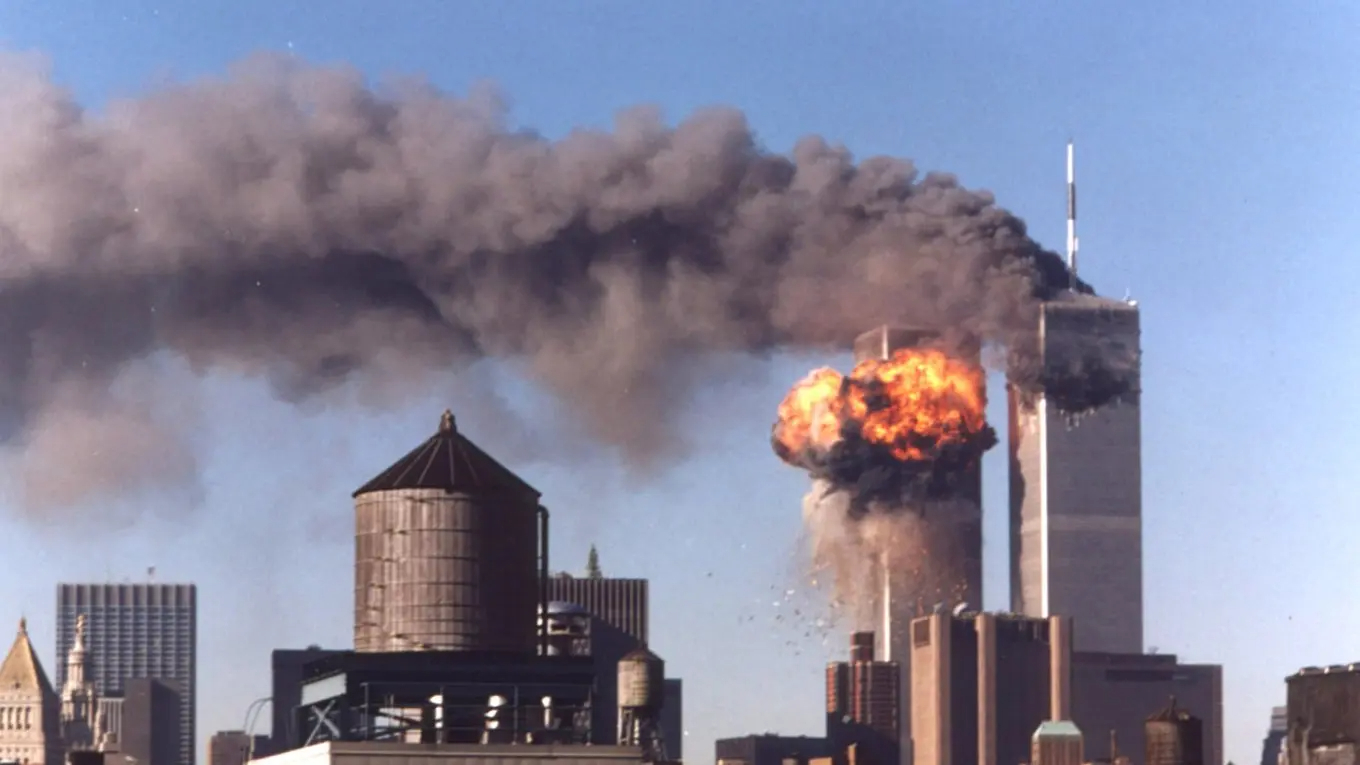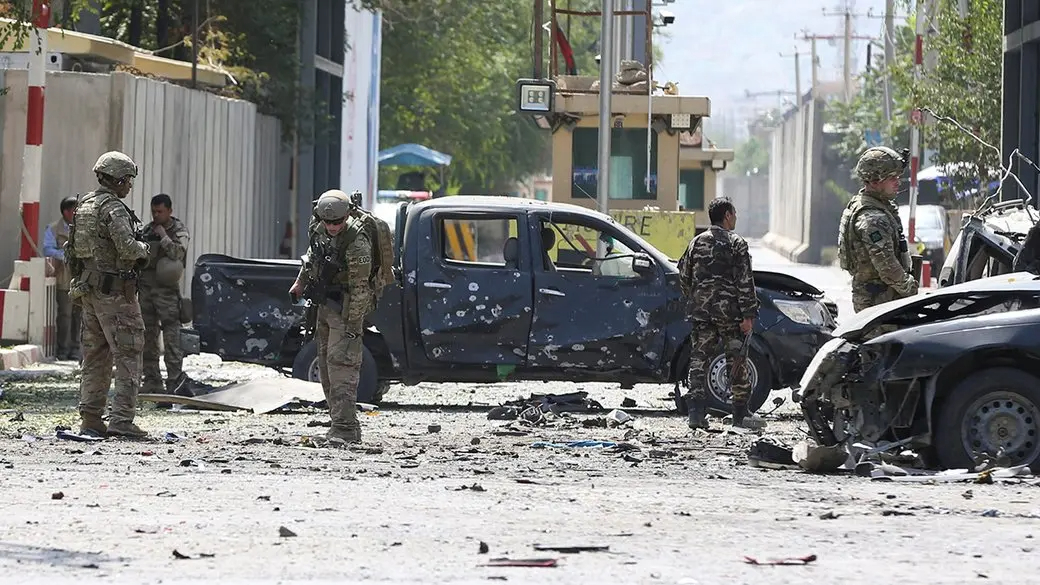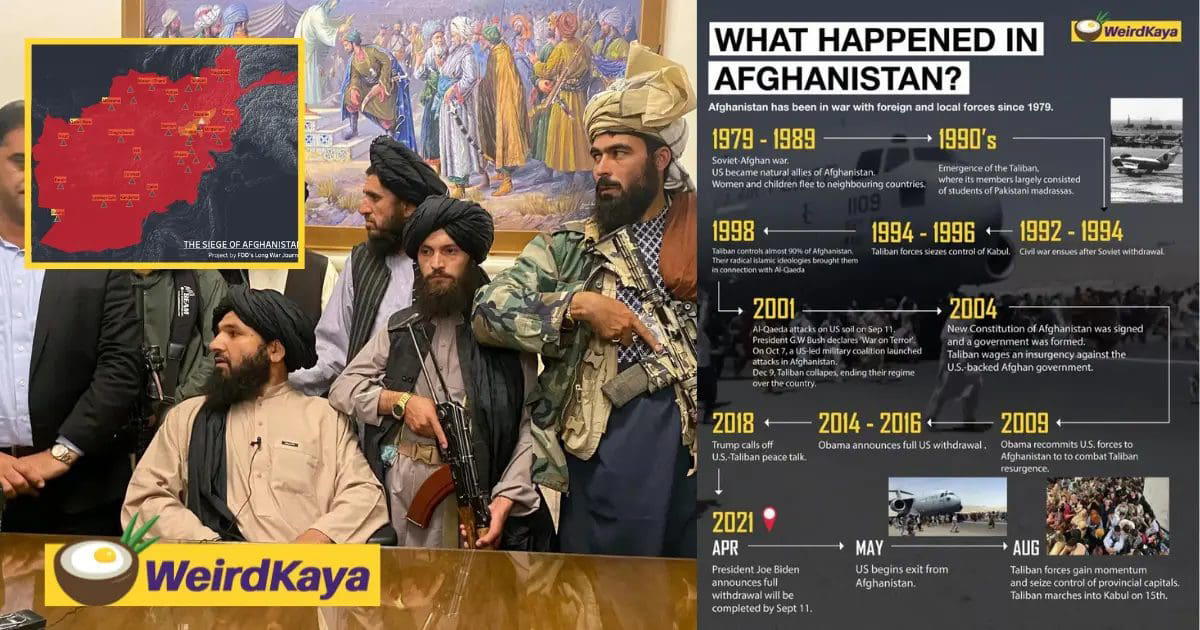Introduction – Where it began
1979 marks the start of the Soviet–Afghan War. It was a nine year guerrilla war between the “Mujahideen” and the USSR.

The Mujahideen or Defenders of faith rebelled against the Soviet’s invasion. The resistance was aided primarily by the United States and other nations such as China and United Kingdom. This conflict led to a Cold War proxy war.
During the war period, women and children fled to neighbouring countries such as Pakistan. They enrolled in school or more specifically Pakistani madrassas where Islamic seminaries are held and taught.
The nine-year conflict caused an estimated civilians casualties of one million. The Soviet’s withdrawal in 1989 from the country, civil wars erupted as tribal leaders fought for control over the country.
Related: Infographics of a brief history of Afghanistan
Taliban Rule of Afghanistan and 9/11
Believed to have emerged in the early 1900s, the Taliban (“Students” in Pashto language) were a group of fighters from Pakistan and Afghanistan who fought against the Soviet invasion in the previous war.
Taliban entered Afghanistan in 1994 and took part in the civil war. In two years, took control of majority of Afghanistan and captured the capital, Kabul. In 1996, they established the Islamic Emirate of Afghanistan (IEA).
They followed strict Islamic laws, prohibiting movies and music. Additionally, they banned women over the age of ten from attending school.
Following the 9/11 attack on the World Trade Centre in 2001, the Taliban were accused of affiliation with al-Qaeda, a radical islamic group widely regarded as a terrorist organisation, as they were harbouring senior leadership members in Afghanistan.

The United States responded the attack by launching “War on terror” on Taliban.
The attack took place on American soil, but it was an attack on the heart and soul of the civilized world.
And the world has come together to fight a new and different war, the first, and we hope the only one, of the 21st century. A war against all those who seek to export terror, and a war against those governments that support or shelter them.”
President George W. Bush, October 11, 2001
The US intervention in Afghanistan toppled the Taliban’s rule, many of its leaders retreated to neighbouring countries.
An interim government was formed and a new Constitution of Afghanistan was signed in 2004.
Despite the presence of international military forces in Afghanistan, the Taliban were still able to maintain their influence in the country while actively planning for a resurgence.
The Peace talks with Taliban
On May 2, 2011, President Obama announced that the leader of the al-Qaeda group Osama bin Laden has been assassinated. In the following month, the president announced to decrease US’s military presence in the Afghanistan.
The negations of peace began in 2013.
In 2014, US led military forces ended their combat mission. President Obama announced a plan for full troop withdrawal from the country by the end of 2016.
The subsequent continued presence of foreign military forces in Afghanistan was to assist and advise the Afghan army and police in their training as they have assumed responsibility of the security of the country.

Council on Foreign Relations
Following an attack that killed an American and 11 others in a car bomb, President Trump called off the peace talk in 2019. Nonetheless, in the following year, he negotiated a deal with the Taliban and a Peace Agreement was signed by U.S. envoy Khalilzad and the Taliban’s Baradar.
The deal included a full U.S. troop withdrawal by May 1, 2021.
However, the negotiation does not guarantee peace between the Taliban and government of Afghanistan.
The Withdrawal of Foreign Troops
In November 2020, Acting U.S. Defense Secretary Christopher C. Miller announced to halve the number of troops in Afghanistan.
By January 15, 2021, our force size in Afghanistan will be 2,500 troops.
Acting Defense Secretary Christopher C. Miller
On April 14 the following year, President Joe Biden announced a plan to withdraw all military presence by September 11.
We will not conduct a hasty rush to the exit.
We’ll do it — we’ll do it responsibly, deliberately, and safely. And we will do it in full coordination with our allies and partners, who now have more forces in Afghanistan than we do.
President Biden, on the Way Forward in Afghanistan
What is happening now
The president’s announcement set the latest offensive in motion. The Taliban were quick to seize provincial cities. On August 15, they successfully infiltrated Kabul, the country’s capital.
Afghan President Ghani was reported to have fled the country. Thousands of Afghanistan were seen rushing to Kabul International airport in hopes to escape the terror.

The future of the country is murkier than ever. It is uncertain if there will be peace talks between the Taliban and the government.
Sources:
- Who are the Taliban
- A timeline of the US withdrawal and Taliban recapture of Afghanistan
- U.S.-Taliban Peace Deal: What to Know
- The Taliban in Afghanistan
Cover Images via FDD Long War Journal and Business Insider, Infographic by WeirdKaya
Author: Anna Wong
Proofreader: Grace Choong


